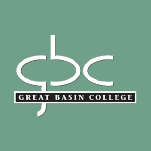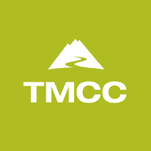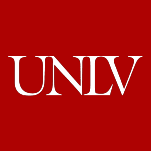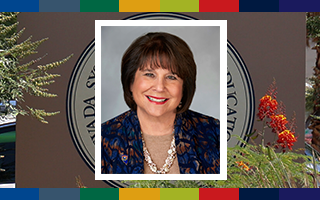NSHE Scientists and Students to Conduct Climate Change Research for NASA

Researchers from the Nevada System of Higher Education were recently awarded a $750,000 grant from NASA EPSCoR to increase Nevada’s ability to participate in NASA research on satellite remote sensing of aerosols and their influence on climate change. This project is funded for three years and will focus on measuring optical properties of aerosols to determine how much incoming solar radiation they scatter back into space and how much they absorb, thereby affecting global and regional climate.
Aerosols are solid or liquid particles that are temporarily suspended in the atmosphere, including combustion-related aerosols containing soot and sulfate particles as well as mineral dust particles entrained from soils.
“While Nevada has an internationally recognized research capacity in aerosol science, this capacity largely hasn’t been utilized for satellite remote sensing of aerosols and their impact on climate change. This project will establish a connection between Nevada’s research capacity and NASA’s research needs in this area leading to increased participation of Nevada scientists and students in NASA-funded research projects,” said Dr. Hans Moosmuller, a research professor at the Desert Research Institute in Reno, Nevada, and the lead investigator for this project.
The NASA Experimental Program to Stimulate Competitive Research (EPSCoR) strengthens the research capabilities of jurisdictions that have not in the past participated equably in competitive aerospace and aerospace-related research activities. EPSCoR provides eligible jurisdictions with funding to develop a more competitive research base within their jurisdiction and member academic institutions.
Aerosols and Greenhouse Gases
The earth’s climate and mean temperature are determined by a balance of solar energy absorbed and infrared radiation emitted by the planet. The well-known greenhouse effect reduces emitted infrared radiation when increased concentrations of greenhouse gases, such as carbon dioxide and methane, act as an atmospheric blanket and thereby increase the earth’s temperature. Alternatively, aerosols interact mostly with the incoming solar radiation. Relatively white aerosols, such as sulfate and organic carbon particles, can reflect solar radiation back into space, thereby cooling the earth; relatively black particles, such as soot, can absorb additional solar radiation, thereby heating the earth.
While greenhouse gases can have an atmospheric lifetime of more than 100 years and are therefore evenly distributed in the atmosphere, aerosols have much shorter lifetimes on the order of one week, thereby preventing them from becoming uniformly mixed. To investigate the influence of aerosols on climate, their concentration and properties need to be monitored nearly continuously in time and space over the whole earth, which is only practical with satellite remote sensing.
Due to environmental regulations, atmospheric concentrations of some aerosols have declined during the past several years in Europe and the United States, but concentrations have increased in many third world regions.
The Challenge
Atmospheric aerosols have been monitored by satellites since the late 1970s. While earlier generations of satellites could not distinguish different aerosol types from one another, new technology measures radiation at multiple wavelengths, viewing angles, and polarizations, allowing for improved particle characterization.
However, key aerosol parameters needed for climate change research, such as single scattering albedo or “whiteness,” still cannot be retrieved from satellite measurements and further development of aerosol remote sensing techniques and more laboratory aerosol characterization are needed as aerosols are still causing the largest uncertainties in anthropogenic radiative forcing and climate change.
NSHE Research
Nevada scientists, in partnership with NASA EPSCoR, will work to improve aerosol remote sensing methods by studying optical properties of these particles. “In essence, we will characterize aerosol spectral properties for multiple aerosol types so they can be used to identify these types and their effects on climate by satellite remote sensing,” said Moosmuller.
Researchers will generate aerosols of interest by burning plant materials in a small biomass combustion facility and by entraining mineral dust collected from all over the world in a dust re-entrainment facility. In addition, satellite ground verification with in situ measurements will be facilitated by installing an automatic sun-sky scanning spectral radiometer on the University of Nevada, Reno campus that will become part of NASA’s global aerosol robotic network (AERONET).
In addition to Moosmuller, principal investigators are Dr. Chris Fritsen, Desert Research Institute; Dr. Patrick Arnott, University of Nevada, Reno; and Dr. Kurt Ehlers, Truckee Meadows Community College; with Dr. Anthony Strawa serving as NASA technical monitor.
During the course of the three-year research project, doctoral students in physics and atmospheric sciences will conduct part of the research as part of their Ph.D. dissertations. In addition, undergraduate students from the University of Nevada, Reno and Truckee Meadows Community College will participate in various experiments and research with another 200 NSHE students per year involved through a Web-based education program.
A quarterly lecture series will bring distinguished speakers from NASA and academia to Reno to give public and technical lectures on aerosols, satellite remote sensing, and climate change. These visitors will be available for discussions with local scientists, students, and the public. Public lectures will be organized by the Northern Nevada Science Coalition.
In addition, Dr. Arnott will develop a satellite remote sensing course at the University of Nevada, Reno that will contribute to the state’s efforts to provide real world relevance to students and promote careers in science, technology, engineering, and mathematics.
“The involvement of students and outreach to the public are crucial components of this project to ensure ongoing improvements in Nevada’s research and educational capacity beyond the three-year project duration,” said Moosmuller.













